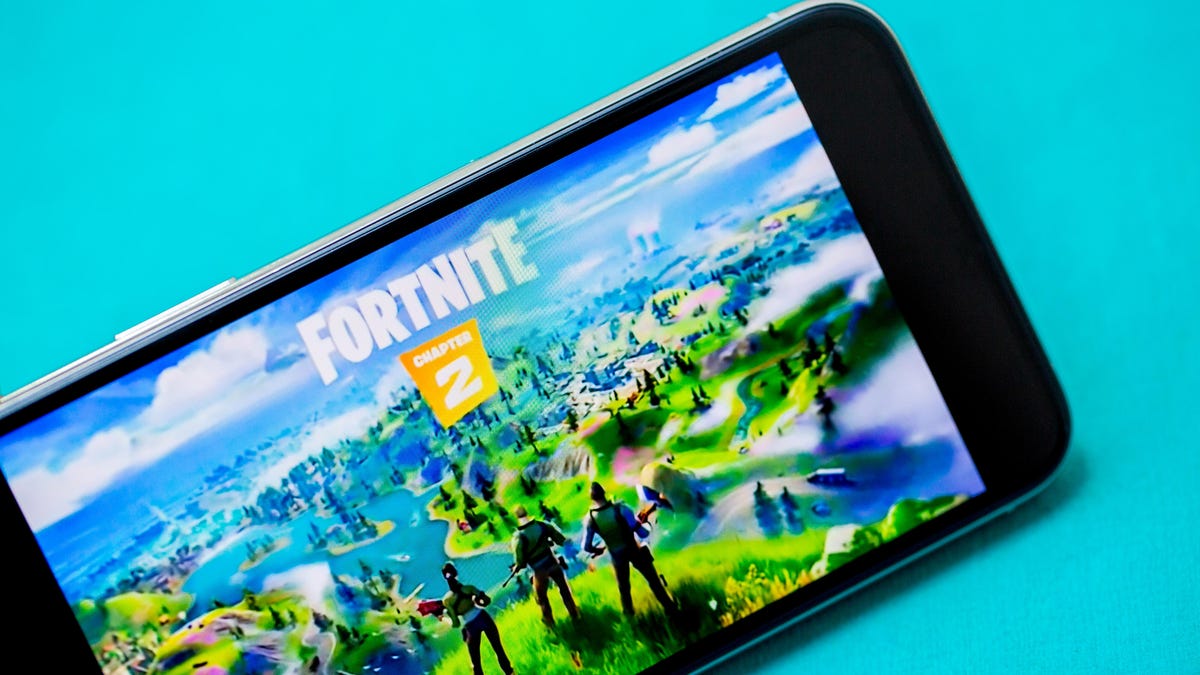5 ways phone gaming will get better, thanks to new Qualcomm chip
Phones running Qualcomm's new Snapdragon chips will pick up more desktop gameplay skills.

Mobile gaming is picking up some new desktop gaming tricks for better gameplay overall.
Two digital pinballs roll slowly across the screen, one a dull grey blob, the other a dynamic orb with light and shadow dancing off its surface as it rolled. This is one demo Qualcomm used this week to show off how its new 5G chips for 2020 -- the Snapdragon 865 and 765G -- will upgrade gaming on your future phone.
Built for high-end devices, the Snapdragon 865 chipset contains the lion's share of the new features, which you should expect to see on phones like a future Samsung Galaxy S11 or LG G9. Meanwhile, the Snapdragon 765G is a midprice 5G chip made just for gaming phones, a distinction from the regular Snapdragon 765 that should help nudge more phones for gamers into the market.
Mobile gaming is an enormous business, and growing every day. Fortnite had nearly 250 million players around the world in March 2019, according to Statista. Esports viewers will surpass every pro sports league by 2021, and 80% of gamers in China will pay more for a gaming phone according to Qualcomm.
We've already seen gaming phones such as the Razer Phone 2 and Asus ROG Phone II help push the demand to bring desktop gaming benefits, which include higher screen refresh rates that make graphics smoother and software modes that keep the focus on the game, to mobile.
Here's how gaming on phones can look more like desktop gaming.
Digital pinball! My favorite #Snapdragon865 demo so far. You can really see how the gaming engines add shadow and light dynamics to this 4K display. Pinball maneuvers courtesy of @saschasegan #SnapdragonSummit pic.twitter.com/sWa3HnNAlE
— Jessica Dolcourt (@jdolcourt) December 4, 2019
5G rendering speeds for premium and midrange phones
Any phone in 2020 that uses either the Snapdragon 865 or 765G chips will work with 5G networks, and that's good for gaming.
Faster speeds mean you'll be able to download large game files faster, and it'll also make real-time gaming possible. You might even gain an advantage against cloud gamers on 4G, who will be hampered by slower reaction times. (The 765G's Adreno 620 GPU renders graphics 10% faster than the standard 765.)
Snapdragon 865 supports 5G speeds up to 7.3Gbps, while 765G supports up to 3.7Gbps downloads over 5G.
A demo phone with Snapdragon 865 inside powers this digital pinball machine.
Up to 144Hz screen refresh rate
Higher-than usual screen refresh rates are starting to hit the mainstream, thanks to support for 90Hz displays in the Pixel 4 and OnePlus 7T, and 120Hz screens in the Asus ROG Phone II and the Razer Phone 2.
That means smoother graphics rendering and faster response time for gameplay, which promises to make the experience smoother overall. Snapdragon 865 will support up to 144Hz display refresh rates, which is a first for mobile and the gold standard for desktop, Qualcomm said, especially among competitive gamers and eSports players.
Qualcomm added that PUBG Mobile now has a 90fps gaming mode that'll roll out soon, after working with Qualcomm to optimize the refresh rate.
The Pixel 4 and OnePlus 7T both use 90Hz refresh rates on their displays.
Unoptimized games get a graphics makeover
There are a lot of engines baked into Snapdragon's Elite Gaming platform to make games look their best, like adding support for over 1 billion colors and 10-bit HDR gaming.
But for games that aren't designed for such high-resolution graphics from the ground up, Qualcomm's chips aim to automatically enhance the graphics' colors and details on all games running on Snapdragon, without having to make changes to game code.
One example is Lineage II: Revolution, which has made over $1 billion in revenue and commands an average of four hours' gameplay in a single session. In the demo we saw, playing on Snapdragon 865 changed the fast-paced action and scenery from blurry and glassy to saturated and sharper just by enhancing the color, which in turn helps differentiate details.
Lights and shadows
Let's return to pinballs bouncing around the screen. Snapdragon's gaming suite is designed to apply desktop-level depth of field, dynamic lighting, shadows and motion blur to make the little details more immersive and realistic.
In addition, a new hardware feature, called Adreno HDR Fast Blend, can accelerate the rendering of particle effects such as fire, snow and smoke, which use up a lot of resources to process well. This tool helps squeeze out those details quickly and accurately, without churning through battery and overheating your phone.
Get driver updates straight from Google Play
PC gamers can update their drivers frequently, to fix bugs, and also boost performance. Being able to update individual GPU drivers wasn't possible on Android, but a partnership with Google has made it so.
You'll soon be able to download drivers from the Google Play store, starting with Qualcomm's app, called Adreno GPU Driver. You'll be able to access those drivers after you've had your phone for awhile, not only just after it's launched.
Qualcomm announced a heap of other news this week, including how Android R will let you store a digital version of your driver's license, and support for phones with 200-megapixel cameras.
Originally published earlier today.

